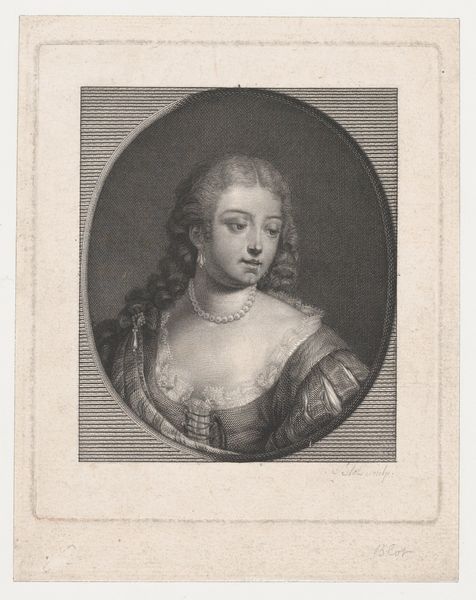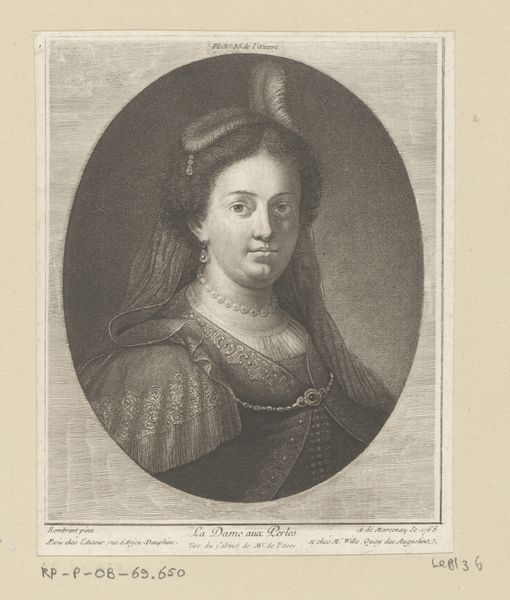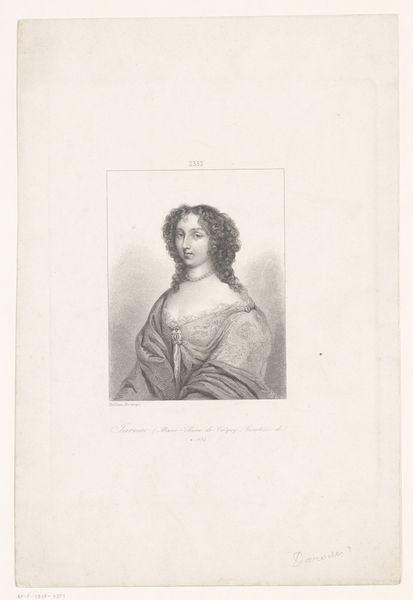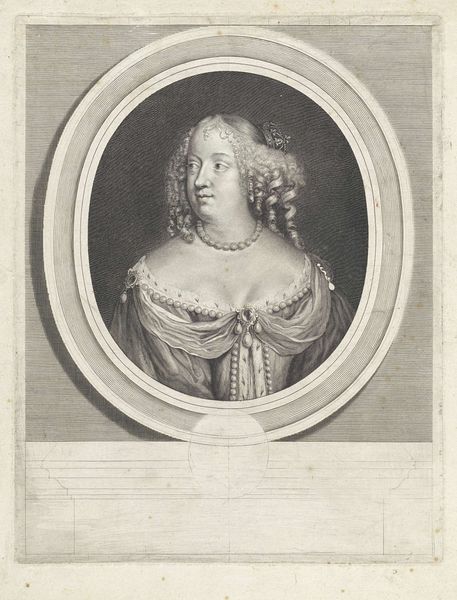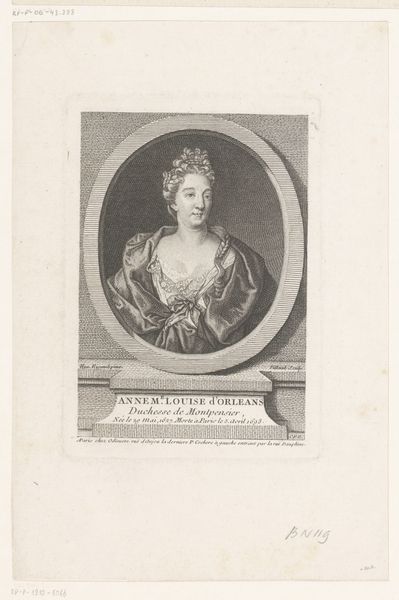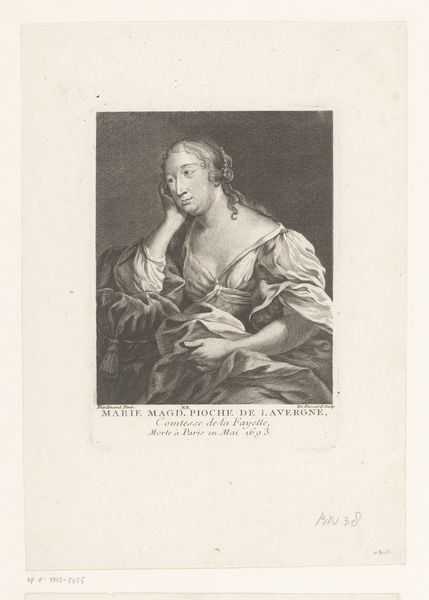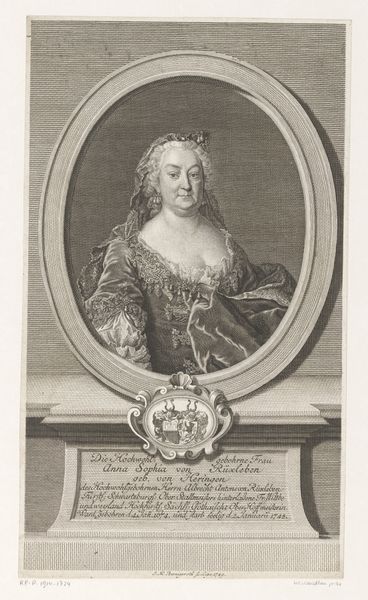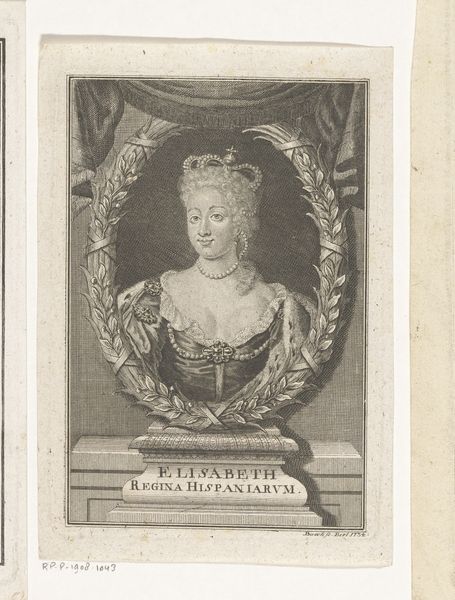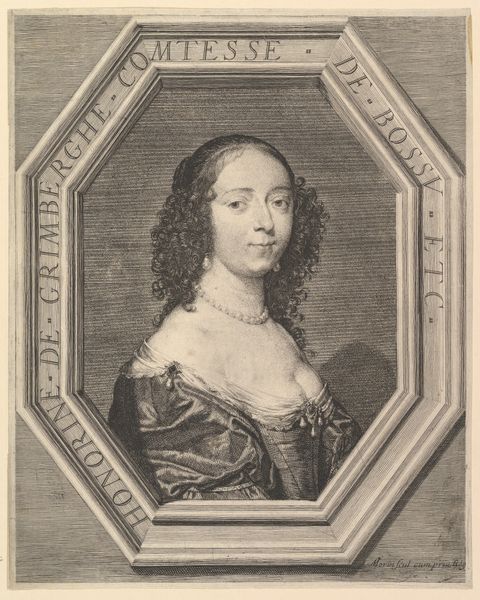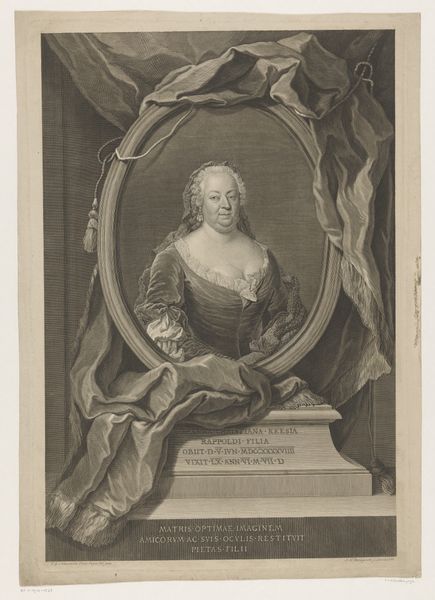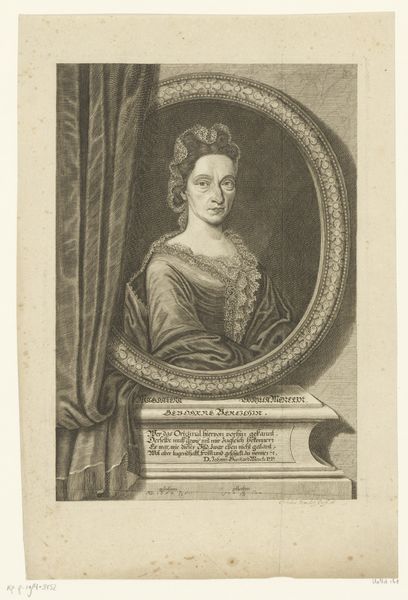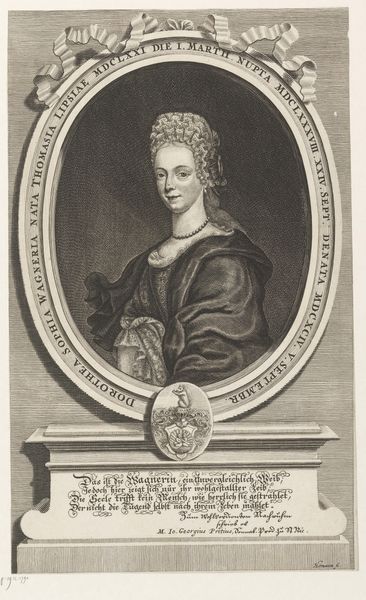
print, engraving
#
portrait
#
baroque
# print
#
old engraving style
#
line
#
engraving
Dimensions: height 145 mm, width 104 mm
Copyright: Rijks Museum: Open Domain
Curator: Here we have Georg Friedrich Schmidt's "Portret van Marie de Rabutin-Chantal," an engraving from somewhere between 1722 and 1775. Editor: Immediately, I'm drawn to the incredible detail. Look at the texture he achieves just with line work—it's practically photorealistic, yet clearly handmade. The controlled process of an engraver is so different than an uninhibited painter's gestural bravado. Curator: Precisely. It's a very deliberate, even codified language of Baroque portraiture, relying heavily on conventions for signaling status and character. Consider, for example, how the oval frame emphasizes the sitter’s timelessness and intellectual value, in the style of an ancient cameo. Editor: Yes, but think about what it takes to create this image materially: the copperplate, the burin, the sheer physical labor of cutting those tiny lines. Then, you have the press, the paper… so many steps to reproduce an image. That labor transforms the portrayed person into an object, something consumable by the rising middle class. Curator: Interesting point! And, speaking of reproduction, the very act of making a print multiplies Marie de Rabutin-Chantal's image, disseminating her likeness and reinforcing the ideals she represents—aristocratic grace, intellectual prowess, all carefully curated for public consumption. Editor: Exactly. Prints democratized access to imagery, making these elite symbols available, but they simultaneously became commodities themselves, reflecting evolving societal values and shifts in economic power. Did it really democratize culture if, by consumption, one assumes their personality? Curator: A powerful paradox. Also notice the emblem placed just below the portrait, acting almost like a family crest, reinforcing dynastic legitimacy through visual rhetoric. It speaks to a longing for stability and permanence. Editor: Agreed. I can't help but be aware, though, of the conditions that fostered such displays. All the manual labor put to aristocratic luxury makes this print more than a neutral portrait. Curator: Thank you, this piece resonates even more now as a multi-layered artifact of a bygone era, rich with artistic skill, social meaning, and material reality. Editor: I'll definitely consider prints with renewed respect for their makers and the economies within which images were first spread.
Comments
No comments
Be the first to comment and join the conversation on the ultimate creative platform.

